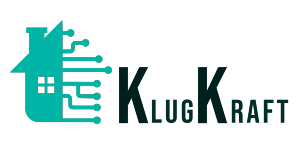HVAC (Heating, Ventilation, and Air Conditioning) automation is a key component of home automation systems that focuses on optimizing and controlling indoor climate conditions for comfort, energy efficiency, and convenience. It utilizes smart technology and automation to regulate heating, cooling, ventilation, and air quality systems within homes or buildings. Here’s an overview of HVAC automation:
- Smart Thermostats: Smart thermostats are the cornerstone of HVAC automation systems. They replace traditional thermostats and are equipped with sensors, connectivity features, and advanced algorithms to intelligently control heating and cooling systems. Smart thermostats can learn user preferences, adjust temperature settings based on occupancy patterns, and optimize energy usage to maintain comfort while reducing energy costs.
- Temperature Control: HVAC automation systems allow homeowners to remotely control and adjust temperature settings in their homes using smartphones, tablets, or voice commands. Through a centralized interface, users can set heating and cooling schedules, adjust temperature settings for different zones or rooms, and monitor indoor temperature levels in real-time. This enables precise temperature control and personalized comfort preferences.
- Energy Efficiency: One of the primary benefits of HVAC automation is improved energy efficiency. Smart thermostats and HVAC systems can optimize energy usage by adjusting temperature settings based on occupancy patterns, outdoor weather conditions, and energy demand. They can also provide energy usage reports and recommendations to help homeowners identify opportunities for energy savings and reduce utility costs.
- Integration with Occupancy Sensors: HVAC automation systems can be integrated with occupancy sensors to optimize energy usage based on room occupancy. For example, when a room is unoccupied, the system can automatically adjust temperature settings or enter an energy-saving mode to reduce energy consumption. This helps minimize energy waste and improve overall efficiency.
- Remote Monitoring and Diagnostics: HVAC automation systems offer remote monitoring and diagnostics capabilities, allowing homeowners to monitor the performance and status of their heating and cooling systems from anywhere with an internet connection. Users can receive alerts and notifications in case of equipment malfunctions, filter replacements, or maintenance reminders, enabling proactive troubleshooting and timely repairs.
- Integration with Weather Forecasting: Some HVAC automation systems integrate with weather forecasting services to anticipate changes in outdoor weather conditions and adjust indoor climate settings accordingly. For example, the system can pre-cool or pre-heat the home based on forecasted temperature changes, ensuring optimal comfort while minimizing energy usage.
- Air Quality Monitoring and Control: In addition to temperature control, HVAC automation systems can monitor and regulate indoor air quality. They can integrate with air quality sensors to measure pollutants, humidity levels, and ventilation rates, and automatically adjust HVAC settings to maintain healthy indoor air quality. This includes controlling ventilation systems, air purifiers, humidifiers, and dehumidifiers as needed.
- Integration with Home Automation Ecosystem: HVAC automation systems can be integrated with other smart home devices and systems, such as lighting, security, and voice assistants, to create a more comprehensive and interconnected home automation ecosystem. For example, HVAC systems can interact with occupancy sensors to adjust temperature settings when a room is occupied, or with security systems to automatically adjust settings when the homeowner is away.
Overall, HVAC automation offers numerous benefits, including improved comfort, energy efficiency, convenience, and air quality. By leveraging smart technology and automation, homeowners can create more comfortable and energy-efficient indoor environments while reducing their carbon footprint and utility costs.

